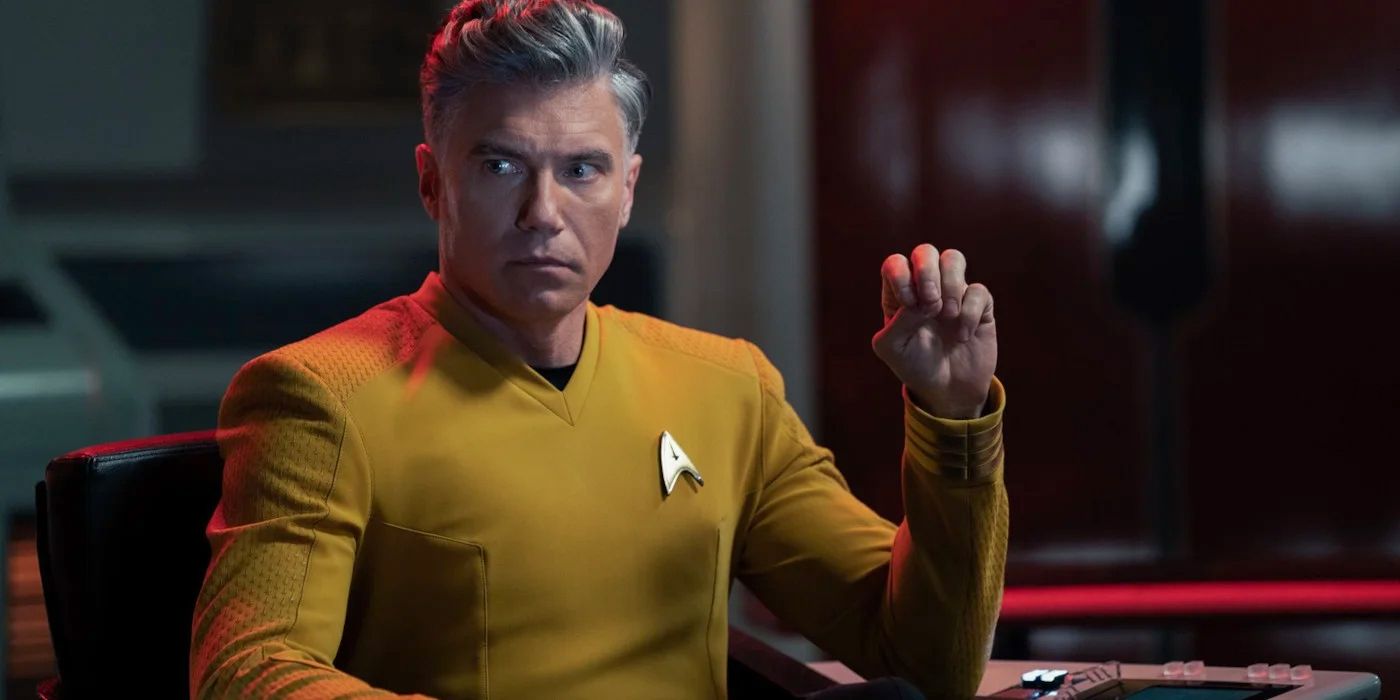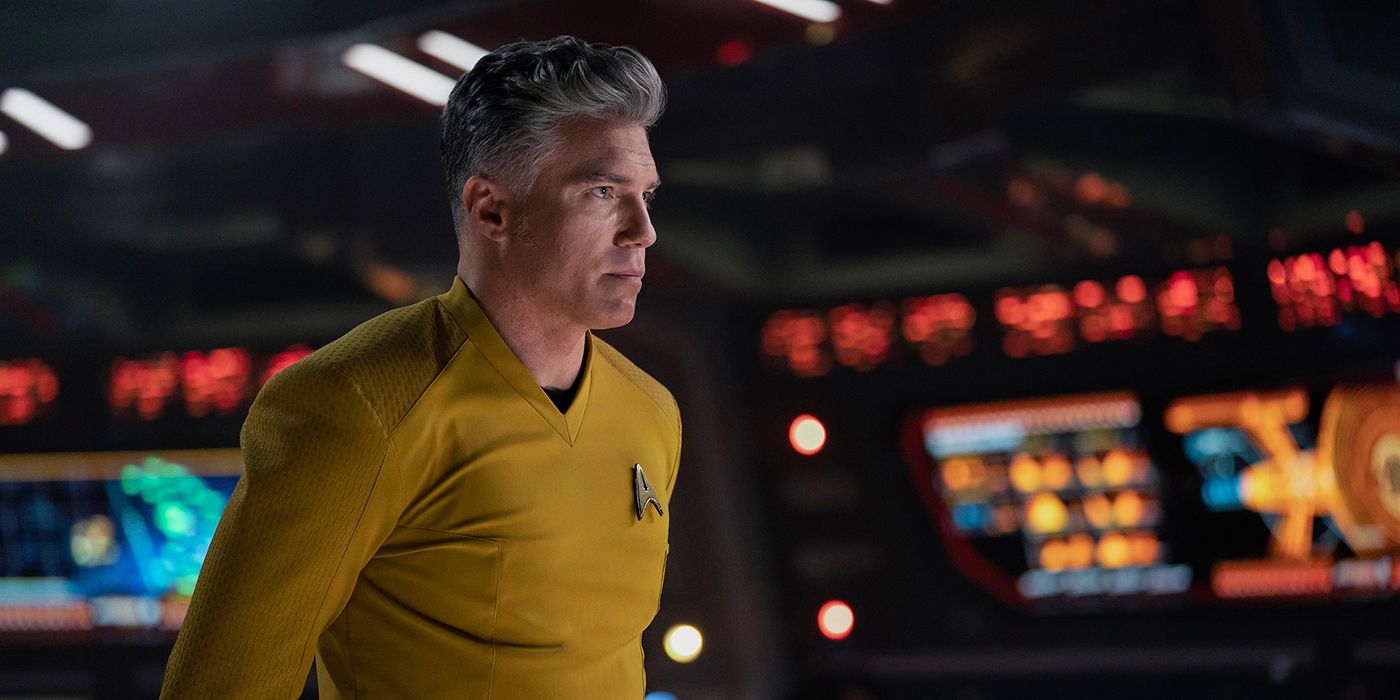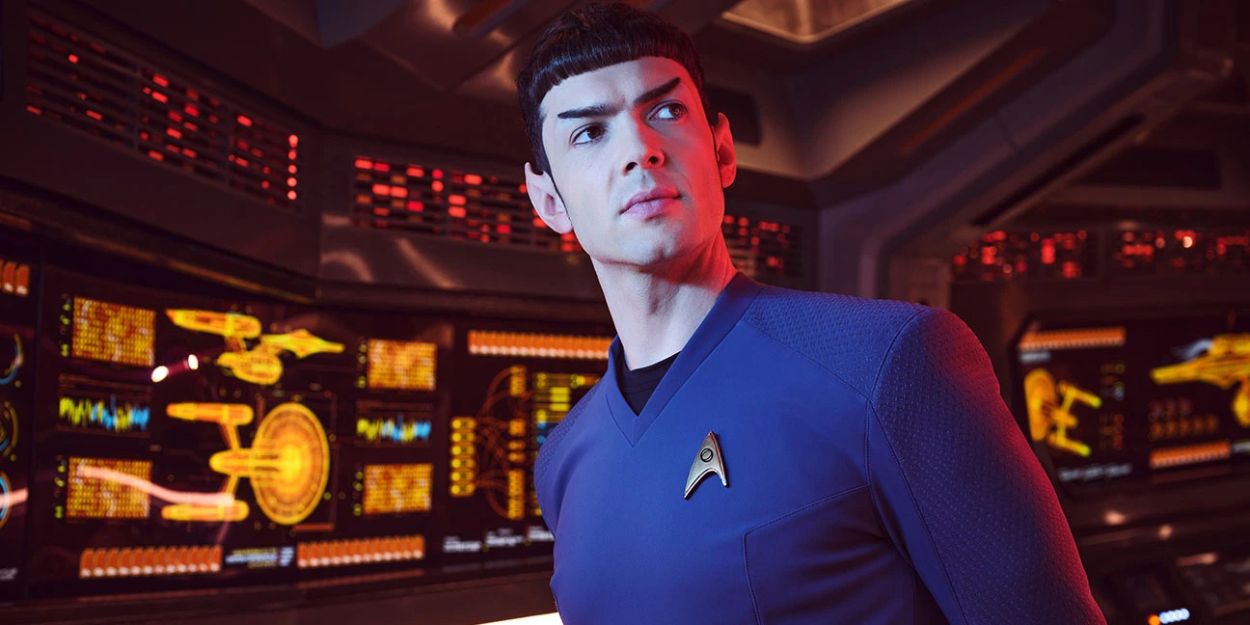The Season 1 finale of Star Trek: Strange New Worlds, “A Quality of Mercy,” finally gave fans an in-depth reason as to why Spock risked his life, career and the good will of Kirk in order to transport Pike to Talos IV. The episode revolved around a stellar retelling of the Star Trek: The Original Series episode, “The Balance of Terror,” and showcased the event as if Pike captained the Enterprise during that encounter with the Romulans instead of Kirk. Exploring this alternate reality perfectly, it unfolded the consequences of Pike altering the timeline, what it meant for the galaxy and for Spock in particular.
Examining the ramifications of Captain Pike’s inevitable fate, and his desire to change his destiny, Pike is sent into the future by an alternate, older version of himself and a Klingon time crystal. He is immediately thrown into the action of a Romulan attack against Federation outposts along the neutral zone — essentially the role Kirk played in the original episode, “The Balance of Terror.”
With unflinching fashion, the show demonstrated Pike’s failure at handling the situation, with echoes of Star Trek: Discovery‘s first episode and Captain Georgiou’s encounter with the Klingons; both cultures do not respond well to peaceful negotiation. In the aftermath of a Romulan offense against the Enterprise, the future version of Spock is severely injured — a mirrored result of what was supposed to happen to Captain Pike.
This is where “A Quality of Mercy” tied itself into the Pike/Spock mythos created in the two-part episode, “The Menagerie,” from Star Trek: TOS. Future Pike (now an Admiral living with the knowledge that his actions started a war) told his present-day self that in whatever fate-changing scenario he devised, Spock died. Captain Pike realized there was no livable option to alter his destiny, not without not causing serious harm to others, and later discussed his new-found awareness with Spock.
Within that conversation Pike conveyed the inevitability of his fate and how changing it could mean transferring it to others. Spock picked up on the implication, as well as the who, and understood the sacrifice Pike made, not only for a safe future, but personally for Spock. This small exchange and interaction deepened the history between these two characters.
For despite the excellence of “The Menagerie” episode, as evidenced by the continued interest in Pike’s character, the reasons behind Spock’s actions, and the risks he took to save Pike, were, for the most part, unexplained except by the vague notion of loyalty. With Pike and Spock now irrevocably linked by fate itself, those actions make more sense and provide much better motivation for Spock’s mutiny.
Spock knew the debt he owed Pike and the price the captain paid. A repayment of this debt of honor created a far better reason for Spock risking death to take Pike to Talos IV, as he recognized the far-reaching consequences of Pike’s actions, even if those around Spock, such as Kirk, did not. Spock acknowledged the sacrifice by giving Pike some peace and easing his suffering.
With the Season 1 finale, Star Trek: Strange New Worlds proved it can stand on its own while maintaining strong ties to the original show. It enhanced Pike’s story, providing both his acceptance of the accident and what happened, and credible motivation for Spock’s loyalty. “A Quality of Mercy” filled a gap between the past and the future in more ways than one.
The first season of Star Trek: Strange New Worlds is streaming on Paramount+.



.jpeg)